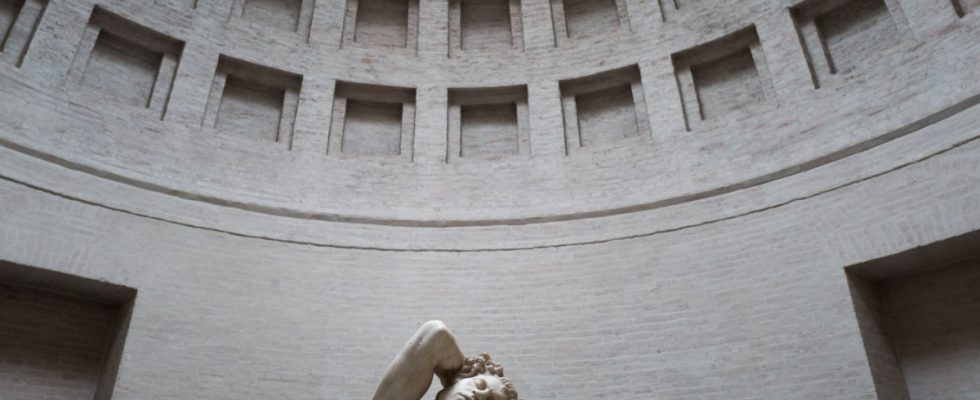For an institution that treated the core of its activities as a state secret for decades, this is really a remarkable publicity offensive: the book is 400 pages long and is intended to comprehensively shed light on the Wittelsbach Equalization Fund (WAF) for the first time. This is a unique foundation that manages assets of more than half a billion euros. The former ruling family of Bavaria receives millions of euros from the proceeds every year. At the same time, the WAF owns a huge art collection, without which Bavaria’s and especially Munich’s museums would be much poorer. This fund probably had to be 100 years old before it and the House of Wittelsbach behind it approved such a work. And that he even presented this and himself at a press conference, that would have been unthinkable not long ago.
It was only seven years ago that it became known at all how much money flows from this foundation under public law to the Wittelsbach family every year: it was around 14 million euros at the time, now it’s almost 17 million. The number could no longer be kept secret at the time, it had come up in court proceedings. But how many people benefit from these payments, who receives what share, whether they have to pay tax on it or not – none of this can be found out. And even in the now published anthology “The Wittelsbacher compensation fund” such secrets are not revealed.
Nevertheless, he provides interesting insights. Particularly in its first part, in which the two editors, the historians Markus C. Müller and Dieter J. Weiß, shed light on the history of the fund. It was brought into being by the Free State in 1923 and was a compromise in the disputed question of what the Wittelsbach household was and what the state was, and whether the state would have to continue paying the family after the 1918 revolution, which it had committed itself to doing 100 years earlier . This is how the fund came about – not as a property of the Wittelsbach family, but as a foundation, equipped with many art treasures and a good deal of wealth, from the proceeds of which the family has been supported ever since. In return, she renounced all claims against the Free State.
The early days were tough, and due to the high inflation, the cash assets were already worthless on the day the Free State paid them to the fund. It wasn’t until the 1950s that the WAF made consistently good profits. In the 1960s, he began not only to rely on his large forest holdings, which no longer brought in enough money, but also to buy securities and company shares. And in the 1970s he dared to invest in America, also driven by the fear of a Soviet invasion of Germany.
One of the most interesting is the chapter about the WAF during the Nazi era: not only did it suffer from the consequences of the war economy, but it also quarreled several times with those in power and defended itself against their requests, perhaps even from Adolf Hitler himself, the Dissolve funds without further ado. He often had to come to terms with the regime, often cultivating a “silent, initially open resistance to the National Socialist regime,” as the archivist Gerhard Immler writes. Even if it was on a small scale – for example by refusing to fly the swastika flag on his buildings and instead hoisting the white and blue one.
Far more space is devoted to the appreciation of the art treasures of the Wittelsbach Compensation Fund: from the world-famous Barberinian faun to the works of Georg Baselitz. Opulently illustrated, it becomes clear how important the WAF is for culture in Bavaria: In 1923, the Wittelsbach family undertook that these works of art would be transferred to the fund for “public use” and that they would be maintained and managed by the state. And the collection is still growing today thanks to donations from the current head of the Wittelsbach family, Franz von Bayern, who will be 90 on Friday.
Not surprisingly, the various heads of collections, who appear as authors, agree that this is a stroke of luck for the Bavarian museums. However, this thesis should not arouse any contradiction. It is a pity, of course, that the anthology also lacks a critical examination of more controversial aspects of the Wittelsbach Equalization Fund. His management since the turn of the millennium and his relationship with the state supervisors, which is not without tension, are hardly mentioned, also because the relevant files were not released. Not dealt with is the question of whether such a tax-privileged foundation structure is still up-to-date, as repeatedly asked by the Greens in the state parliament as lonely voices, the secrecy of the WAF or the controversial fact that the house archive of the Wittelsbach family has belonged to the WAF for 100 years and is managed by the main state archives, but that the head of the family still has to approve any inspection to this day. It is obvious that the head of this archive does not problematize this question in his contribution. It may take a few more decades to get deeper answers about the WAF.
Markus C. Müller/Dieter J. White (ed.): The Wittelsbach compensation fund. Published by Pustet-Verlag. 400 pages, 39.95 euros.

